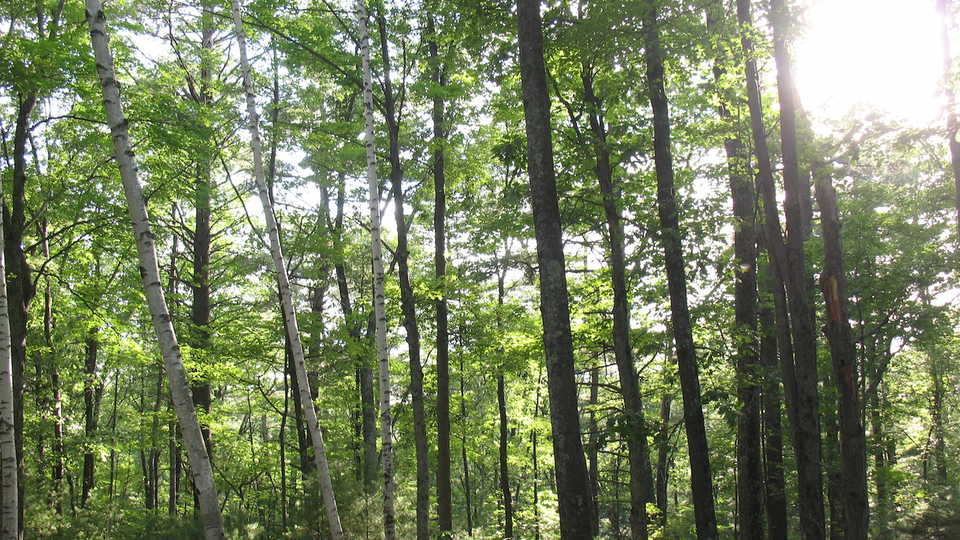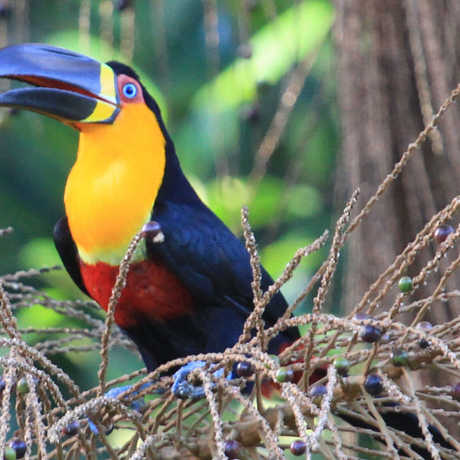Science News
Trees Overturn Assumptions

A new paper published in Nature fills long-standing gaps in our understanding of forest-atmosphere carbon exchange.
Scientists measured the respiration and photosynthesis rates of a temperate deciduous forest with unprecedented precision, finding trees “exhale” much less carbon dioxide (CO2) during the day than previously thought. They also found evidence that forest photosynthesis continues through summer, instead of peaking after leaf expansion in the spring.
“Our study is about how a whole forest ecosystem consumes and produces carbon dioxide, or CO2, the main greenhouse gas linked to human-induced climate change,” says Richard Wehr, lead author on the paper. “If we want to predict more precisely how human perturbation is going to impact atmospheric CO2, and therefore climate, we have to better understand how forests take up and release carbon.”
The study overturns assumptions made in traditional climate models, which the authors found to overestimate ecosystem photosynthesis and daytime respiration in the first half of the growing season at their Massachusetts study site. These results will be useful in revising models to better predict long-term effects of climate change.
Scientists have wanted to measure forest CO2 production (respiration) and consumption (photosynthesis) independently for decades. Lacking a sophisticated method to do so, most climate models have relied on net ecosystem-atmosphere CO2 exchange (NEE), which is based on assumed ecosystem-scale responses.
“Because respiration rates generally increase with temperature, forests have typically been modeled as respiring more during the warm day than the cool night,” says Wehr. “It turns out that's not the case. We found that forest respiration is as much as 50 percent less during the day than at night in the late spring and early summer.”
The scientists in this study used a combination of carbon flux towers and new instrumentation that enabled them to monitor two carbon dioxide isotopes separately involved in photosynthesis and respiration. The exactness of their methods is impressive.
“If a gust of air comes up from the forest with an isotope ratio that's off by one part in 30,000, we can tell,” Wehr says. “That's like noticing that one person is taller than another by the width of a human hair as they walk past you.”
The study, out of the Saleska Lab at the University of Arizona, provides the first robust evidence of how leaf respiration is inhibited by light at the ecosystem scale.
It also challenges the assumption that plants’ efficiency in photosynthesizing light declines in the summer season due to leaf aging and/or water stress. Instead, temperate deciduous trees appear to consume CO2 just as efficiently when their leaves are old as when they’re new. This finding urges further study of the impact of leaf-level physiology on broader ecosystem carbon fluxes.
Scott Saleska, co-author of the paper, put the research in context of broader global change: “In order to understand what forests will do in the next 50 to 100 years, we have to do a better job at understanding how forest photosynthesis and respiration separately respond to changing weather and climate. This study offers a way forward for doing just that with better measurements, as shown by the new insights it is already giving us into how forests respond to sunlight and to the changing of the seasons.”
Image: Aaron Knox/Flickr


